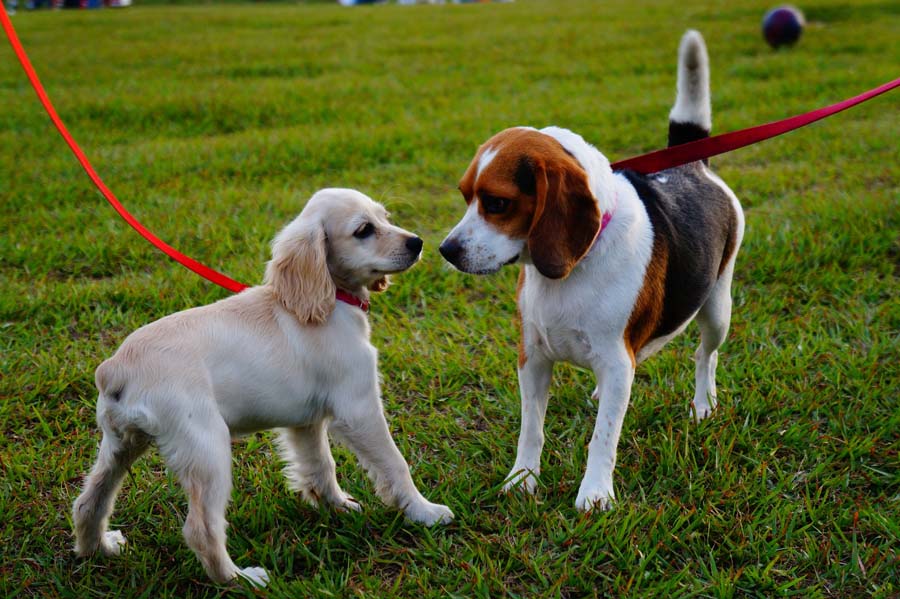A Turramurra Vet Article
To Greet or Not to Greet? Managing Interactions with Other Dogs While Walking your Dog

To Greet or Not to Greet? Managing Interactions with Other Dogs While Walking your Dog
by Katie Bedrossian, Pet Behaviour Consultant
Dogs are naturally social animals and when positively introduced to other dogs as a young pup, they usually enjoy the company of their own kind.
However, unlike the past where dogs were let out the front door each morning to meet up with their doggy friends in the neighbourhood, exploration outside your property gates is now restricted, which is important for safety. So nowadays, are greetings on a lead the best way to socialise a dog?
On lead greetings:
- Are not natural. Natural greetings involve a choice to approach, space to retreat, sniffing, circling and advancing to play (all of which dogs on lead can’t do properly).
- Encourage pulling (not just to other dogs but for the rest of your walk).
- Encourage jumping up.
- Increase hyperarousal and frustration (as dogs can’t circle or play).
- Increase anxiety (lack of escape).
- Decrease social skills (causing excitable dogs to ignore cut off signals from other dogs and anxious dogs to avoid or react).
When are on lead greetings appropriate?
- When both owners want the interaction to occur.
- When both dogs want the interaction to occur (relaxed wiggly bodies, not an ounce of tenseness or frozen body language).
- When both dogs approach each other on loose leads (from point of sight to end of greeting).
- When the greeting will be a sniff and greet only, not play.
What to do instead of on lead greetings (all of these are socialisation according to your dog):
- Group walks with other dogs (walking alongside but not interacting on lead).
- Off leash play dates with family, friends, neighbours, local known dogs on private property (your place or theirs but remove all toys and food items).
- Regular sightings of other dogs on walks, but at a distance so your dog can stay calm and be rewarded for calm.
If you are struggling with passing other dogs on a lead, a private behaviour consultation with our Pet Behaviour Consultant, Katie Bedrossian, can help work out a personal plan for you and your dog. Book in by phoning our Customer Care Team on 9988-0198.

